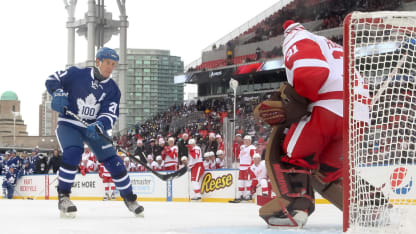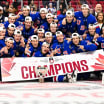At the time, Sweden had two TV channels, both public service, and newspaper reports from the NHL were few and far between. That deprived Swedish hockey fans a chance to follow Salming's career as closely as they would have liked. On the other hand, it also helped turn Salming into a larger than life figure.
Even today, playing for Sweden in national competition is where heroes are made. Winning the Stanley Cup and individual awards will get you the respect of a nation but it won't get you its love. Salming, however, is loved and respected, and he's admired because of what he did on the ice.
He's also admired and respected in Canada.
That was never more apparent than in 1976, when Salming played for Sweden in the Canada Cup. As the public address announcer at Maple Leaf Gardens introduced Sweden's starting lineup, Salming received a long standing ovation. Sweden's No. 5 stood on the blue line for a couple of minutes, then bowed his head and started to skate in circles, visibly uncomfortable with all the attention.
"After a couple of minutes, it got to be embarrassing. I didn't know what to do," he told Swedish paper NSD a few years ago.
After the game, Salming received another, just as thunderous, standing ovation as first star of the game. Those ovations are still part of Swedish hockey lore, more than any individual shot, goal, hit, or blocked shot Salming ever had.
It's the way the sold-out crowd at Maple Leaf Gardens cheered and stomped their feet to show their appreciation of the … foreigner, a non-Canadian, a Swede that dumbfounded his fellow Swedes and made them realize what a success he became. He was hockey's answer to Greta Garbo, the first Swedish actress to be nominated for an Academy Award.
Salming wasn't the first Swedish born and trained player to get to 100 games in the NHL, either -- Bergman beat him to it -- but he was the first to reach 200. And 300, 400, and 500. By the time he played 500, during the 1979-80 season, Salming had played 100 more games than the next Sweden-born player, Inge Hammarstrom. By the end of 1983, he was 295 games ahead of Stefan Persson.




















